
Scorpius, first published in 1988, is the seventh novel by John Gardner featuring Ian Fleming's secret agent, James Bond. Carrying the Glidrose Publications copyright, it was first published in the United Kingdom by Hodder & Stoughton and in the United States by Putnam.
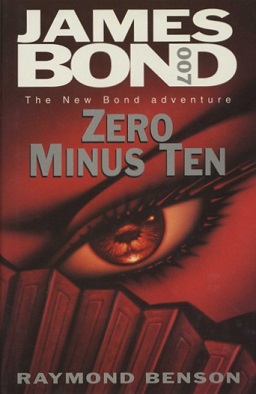
Zero Minus Ten, published in 1997, is the first novel by Raymond Benson featuring Ian Fleming's James Bond following John Gardner's departure in 1996. Published in the United Kingdom by Hodder & Stoughton and in America by Putnam, the book is set in Hong Kong, China, Jamaica, England and some parts of Western Australia.
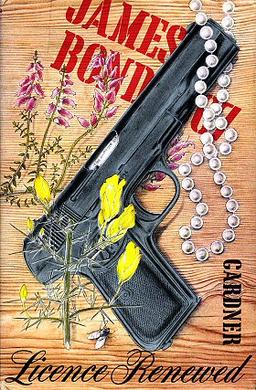
Licence Renewed, first published in 1981, is the first novel by John Gardner featuring Ian Fleming's secret agent, James Bond. It was the first proper James Bond novel since Kingsley Amis's Colonel Sun in 1968. Carrying the Glidrose Publications copyright, it was first published in the United Kingdom by Jonathan Cape and in the United States by Richard Marek, a G. P. Putnam's Sons imprint.

For Special Services, first published in 1982, was the second novel by John Gardner featuring Ian Fleming's secret agent, James Bond. Carrying the Glidrose Publications copyright, it was first published in the United Kingdom by Jonathan Cape and in the United States by Coward, McCann & Geoghegan. Cover designed by Bill Botten.

Icebreaker, first published in 1983, was the third novel by John Gardner featuring Ian Fleming's secret agent, James Bond. Carrying the Glidrose Publications copyright, it was first published in the United Kingdom by Jonathan Cape and is the first Bond novel to be published in the United States by Putnam, beginning a long-standing association. Part of the book takes place in Northern Europe, including Finland; to make his book as authentic as possible, Gardner even visited Finland.

Role of Honour, first published in 1984, was the fourth novel by John Gardner featuring Ian Fleming's secret agent, James Bond. Carrying the Glidrose Publications copyright, it was first published in the United Kingdom by Jonathan Cape and in the United States by Putnam.
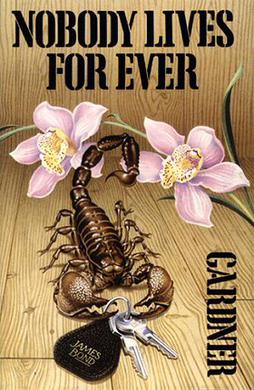
Nobody Lives for Ever, first published in 1986, was the fifth novel by John Gardner featuring Ian Fleming's secret agent, James Bond. Carrying the Glidrose Publications copyright, it was first published in the United Kingdom by Jonathan Cape and in the United States by Putnam.
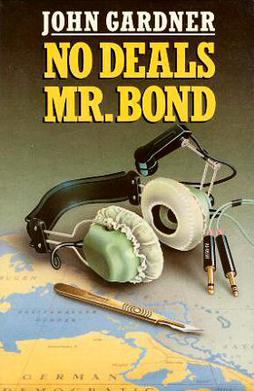
No Deals, Mr. Bond, first published in 1987, was the sixth novel by John Gardner featuring Ian Fleming's secret agent, James Bond. Carrying the Glidrose Publications copyright, it was first published in the United Kingdom by Jonathan Cape and in the United States by Putnam. It was the last Bond novel to be published in Britain by Jonathan Cape, ending an association dating back to the first Bond novel, Casino Royale in 1953.
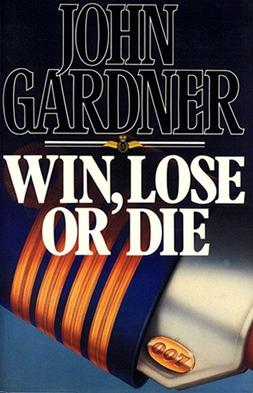
Win, Lose or Die, first published in 1989, was the eighth novel by John Gardner featuring Ian Fleming's secret agent, James Bond. Carrying the Glidrose Publications copyright, it was first published in the United Kingdom by Hodder and Stoughton and in the United States by Putnam.

Brokenclaw, first published in 1990, was the tenth novel by John Gardner featuring Ian Fleming's secret agent, James Bond. Carrying the Glidrose Publications copyright, it was first published in the United Kingdom by Hodder & Stoughton and in the United States by Putnam. The book title is sometimes presented as two words, but is correctly one word since it is a character name.

The Man from Barbarossa, first published in 1991, was the eleventh novel by John Gardner featuring Ian Fleming's secret agent, James Bond. Carrying the Glidrose Publications copyright, it was first published in the United Kingdom by Hodder & Stoughton and in the United States by Putnam.
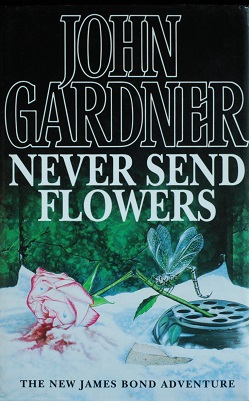
Never Send Flowers, first published in 1993, was the thirteenth novel by John Gardner featuring Ian Fleming's secret agent, James Bond. Carrying the Glidrose Publications copyright, it was first published in the United Kingdom by Hodder & Stoughton and in the United States by Putnam.
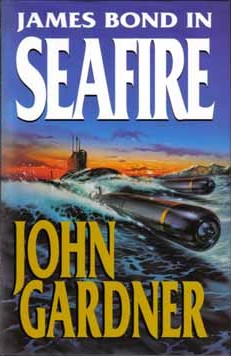
SeaFire, first published in 1994, was the fourteenth novel by John Gardner featuring Ian Fleming's secret agent, James Bond. Carrying the Glidrose Publications copyright, it was first published in the United Kingdom by Hodder & Stoughton and in the United States by Putnam.

Cold, first published in 1996, was the sixteenth and final novel by John Gardner featuring Ian Fleming's secret agent, James Bond. Carrying the Glidrose Publications copyright, it was first published in the United Kingdom by Hodder & Stoughton and in the United States by Putnam.

The Facts of Death, first published in 1998, was the third novel by Raymond Benson featuring Ian Fleming's secret agent, James Bond. Carrying the Glidrose Publications copyright—the final James Bond novel to do so—it was first published in the United Kingdom by Hodder & Stoughton and in the United States by Putnam.

High Time to Kill, published in 1999, is the fourth novel by Raymond Benson featuring Ian Fleming's secret agent, James Bond. This is the first James Bond novel copyrighted by Ian Fleming Publications. It was published in the United Kingdom by Hodder & Stoughton and in the United States by Putnam. The novel's working title was A Better Way to Die.

DoubleShot, first published in 2000, was the sixth novel by Raymond Benson featuring Ian Fleming's secret agent, James Bond. Carrying the Ian Fleming Publications copyright, it was first published in the United Kingdom by Hodder & Stoughton and in the United States by Putnam. The novel's working title was Doppelganger.

Never Dream of Dying, first published in 2001, was the seventh novel by Raymond Benson featuring Ian Fleming's secret agent, James Bond. Carrying the Ian Fleming Publications copyright, it was first published in the United Kingdom by Hodder & Stoughton and in the United States by Putnam.

The Man with the Red Tattoo, first published in 2002, was the sixth and final original novel by Raymond Benson featuring Ian Fleming's character James Bond. Carrying the Ian Fleming Publications copyright, it was first published in the United Kingdom by Hodder & Stoughton and in the United States by Putnam. It was later published in Japan in 2003. The novel's working title was Red Widow Dawn.

The Looking Glass War is a 1965 spy novel by John le Carré. Written in response to the positive public reaction to his previous novel, The Spy Who Came in from the Cold, the book explores the unglamorous nature of espionage and the danger of nostalgia. The book tells the story of an incompetent British military intelligence agency known as The Department and its multiple botched attempts to verify a Communist defector's story of a Soviet missile buildup in East Germany. Some editions hyphenate "Looking Glass".




















